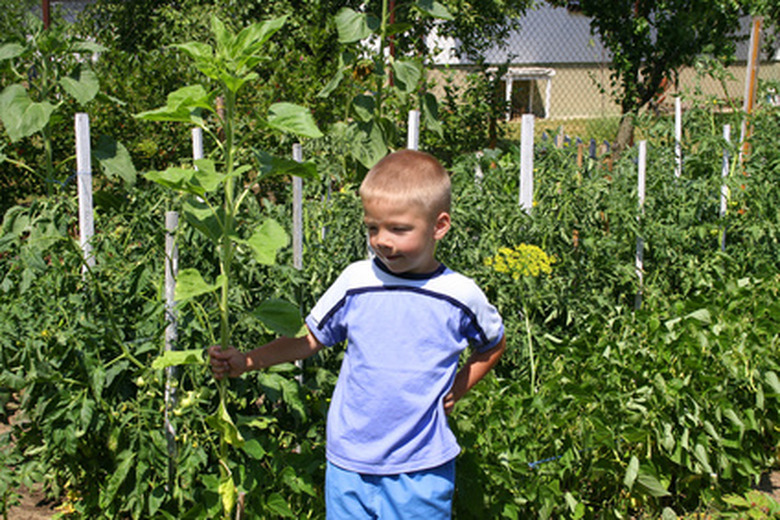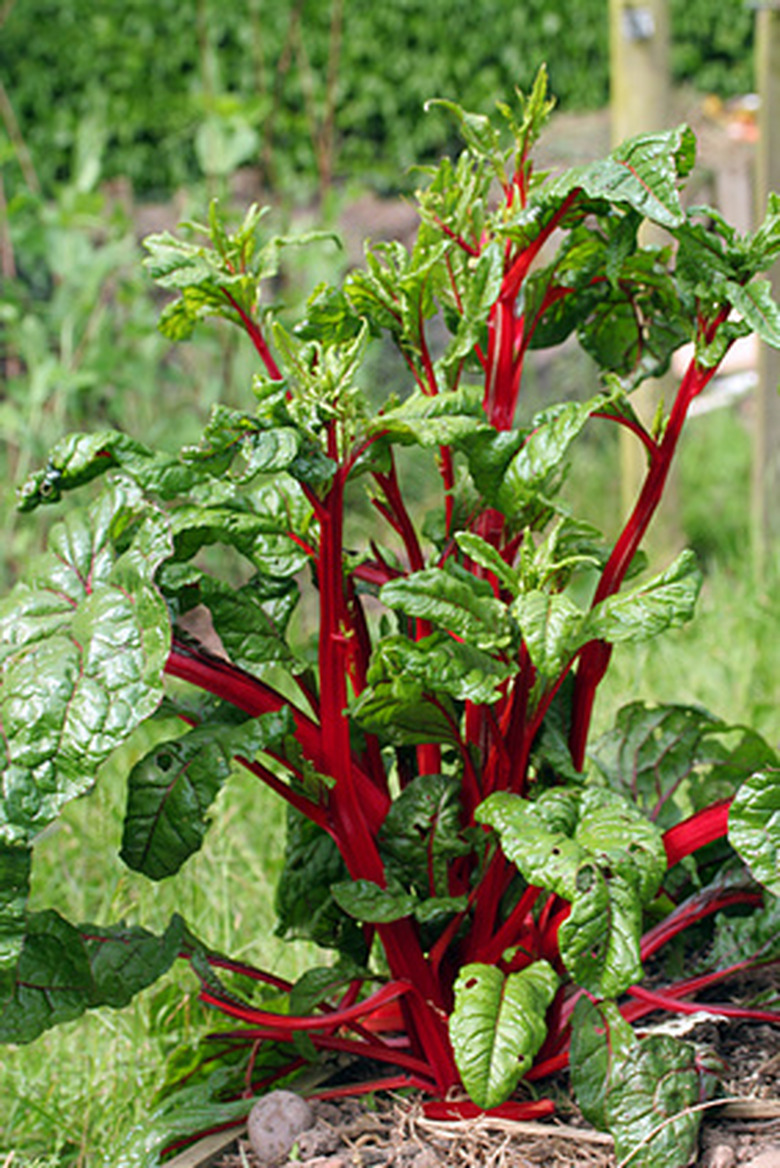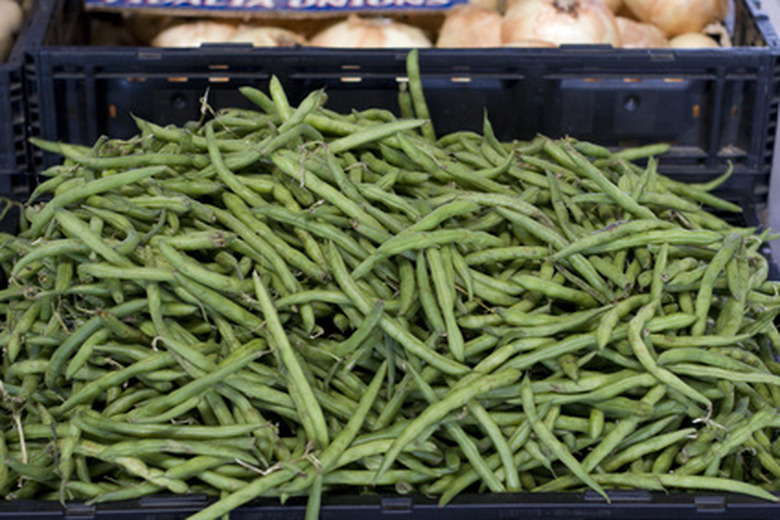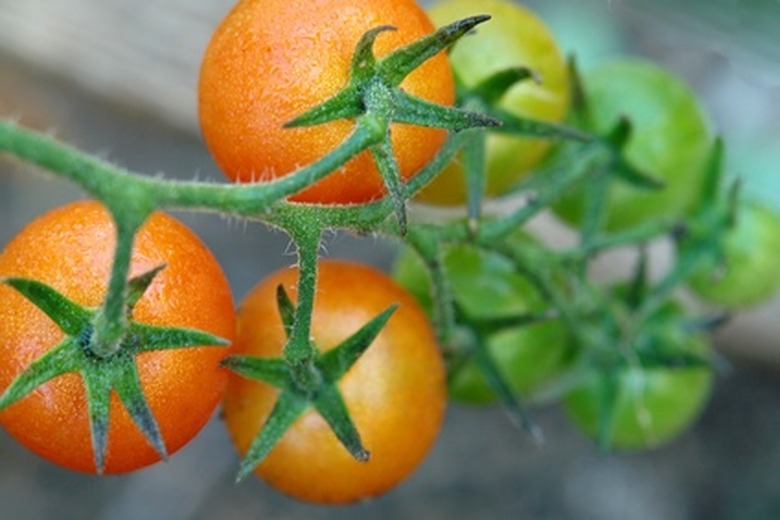How To Plant A Vegetable Garden In Utah
Things Needed
- Compost
- Peat moss
- Manure
- Granular fertilizer for vegetables
- Shovel
- Hoe
- Rotary tiller
Drive through northern and central Utah and you'll notice orchards, farms and gardens everywhere. Gardening is a popular hobby here, especially along the Wasatch Front, where reasonably fertile soil and plentiful water provide good growing conditions. Southern Utah, near Pine and St. George, has long, hot summers and volcanic soil perfect for growing tomatoes. Consult a local county extension office or knowledgeable neighbors for the best time to plant, as well as the best cultivars.
Prepare the soil
Step 1
Clear any weeds and debris from your chosen garden site.
Step 2
Lay 2 inches of compost, 2 inches of manure and 1 inch of moistened peat moss on the garden area. Utah soils are alkaline and either contain clay or sand. Adding organic material improves the soil texture. Peat moss lowers the pH slightly, as well.
- Drive through northern and central Utah and you'll notice orchards, farms and gardens everywhere.
- Southern Utah, near Pine and St. George, has long, hot summers and volcanic soil perfect for growing tomatoes.
Step 3
Dig the amendments 8 inches into the soil with a shovel or till the soil with a rotary tiller. Never work the soil when it's wet. Doing so will compact and damage the soil. The soil should be dry enough that it moves freely through your hands, without balling.
Planting the Utah Garden
Step 1
Plant cool-season vegetables, such as rhubarb, broccoli, cabbage, kohlrabi, onions, peas and spinach between March 15 and May 1 for most of Utah. Gardeners in southern Utah can plant a week or two before that. Plant in rows or blocks, according to your preference. Plant seeds approximately 1/4 inch under the soil, or two to three times the size of the seed.
- Dig the amendments 8 inches into the soil with a shovel or till the soil with a rotary tiller.
- The soil should be dry enough that it moves freely through your hands, without balling.
Step 2
Plant semi-hardy vegetables such as beets, carrots, cauliflower, lettuce and chard two weeks later.
Step 3
Plant warm-season vegetables such as beans, corn, cucumbers and summer squash two weeks before the last frost or when the apples bloom. Plant these seeds 1/2 to 1 inch beneath the soil surface. These crops need warm soil to germinate, so wait until daytime temperatures are predictably around 70 degrees F.
Step 4
Plant tender vegetables–such as tomatoes, peppers, eggplant and melon–after the last expected frost–between May 20 to June 10–for most of Utah. Grow tomato, pepper and eggplant from nursery plants, or start seedlings indoors. These slow-growing plants won't reach maturity before fall frosts in Utah if planted from seed.
- Plant semi-hardy vegetables such as beets, carrots, cauliflower, lettuce and chard two weeks later.
- These crops need warm soil to germinate, so wait until daytime temperatures are predictably around 70 degrees F. Plant tender vegetables–such as tomatoes, peppers, eggplant and melon–after the last expected frost–between May 20 to June 10–for most of Utah.
Caring for the Utah Garden
Step 1
Water the garden at least twice weekly during dry spells to keep the soil evenly moist. Utah can go for weeks with no rain during the growing season. Check the soil's moisture level by sticking your finger in it. It should feel moist 1 inch under the surface.
Step 2
Pull up weeds by hand weekly or hoe lightly to remove them. Weeding is especially important when plants are small because the weeds compete with the plants for moisture and nutrients. Larger vegetable plants crowd out and shade weeds, slowing their growth.
- Water the garden at least twice weekly during dry spells to keep the soil evenly moist.
- Check the soil's moisture level by sticking your finger in it.
Step 3
Apply granular fertilizer according to package directions two weeks after planting and again mid-July and mid-August. Lightly work the fertilizer into the soil with a hoe and water it.
Step 4
Harvest tomatoes, peppers, melons, cucumbers and beans when they are average size and the expected color. Harvest root vegetables when the stems stand at least 12 inches tall. Stick your finger into the soil to feel the size of the vegetable when in doubt.
Tip
Select the sunniest site in your yard for the garden, preferably with a southern or southwestern exposure. Choose a spot close to a watering source and reasonably close to your home. Cover tomatoes, peppers and eggplants with row covers or cloches if temperatures threaten to dip below 60 degrees F. Consider your gardening needs before planting a garden. Only plant what you need and what your family will eat.
Warning
Don't allow fertilizer to touch the plants' roots or leaves. Fertilizer will burn plants. Rotate crops yearly to minimize diseases and pests in your yard.



